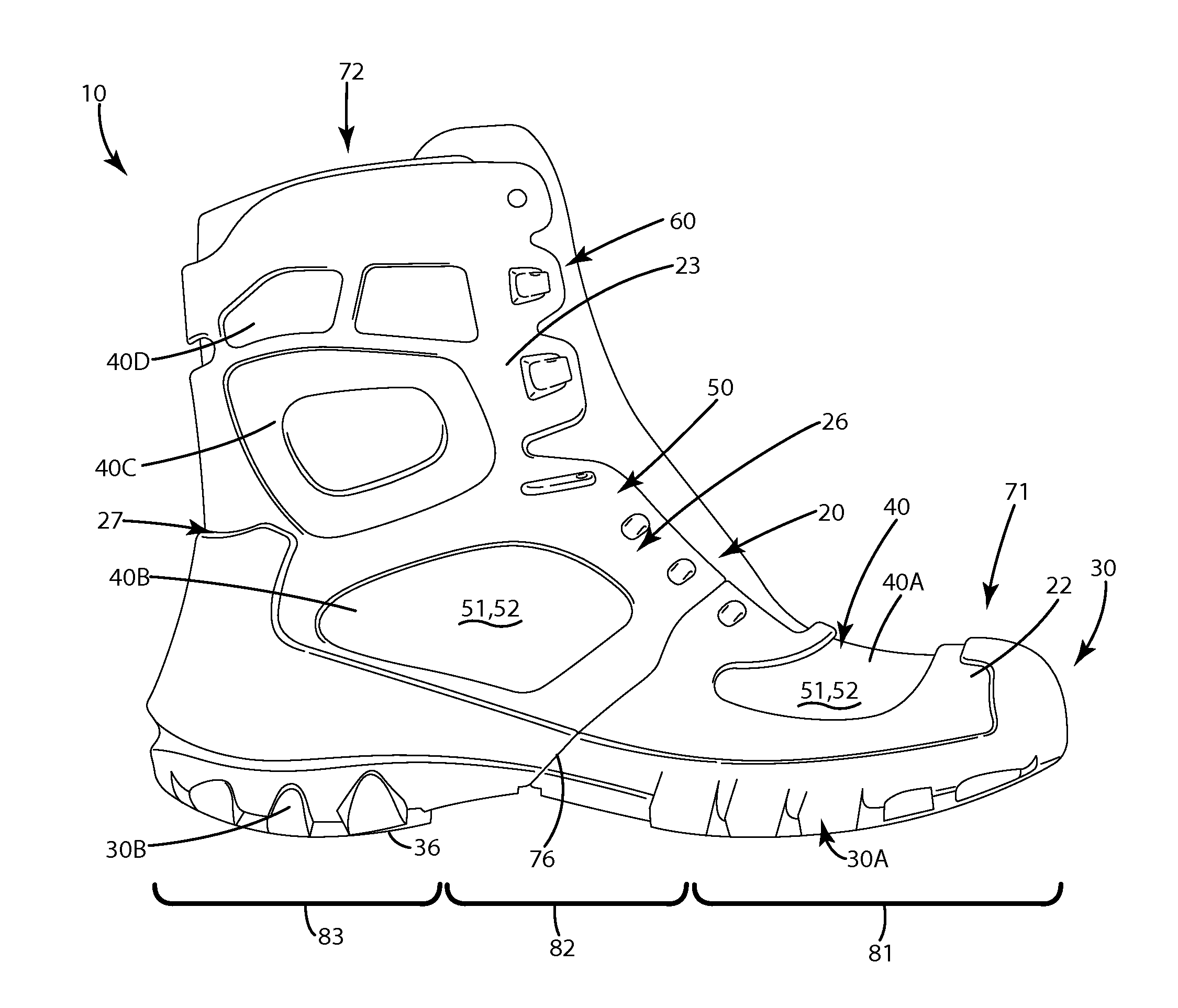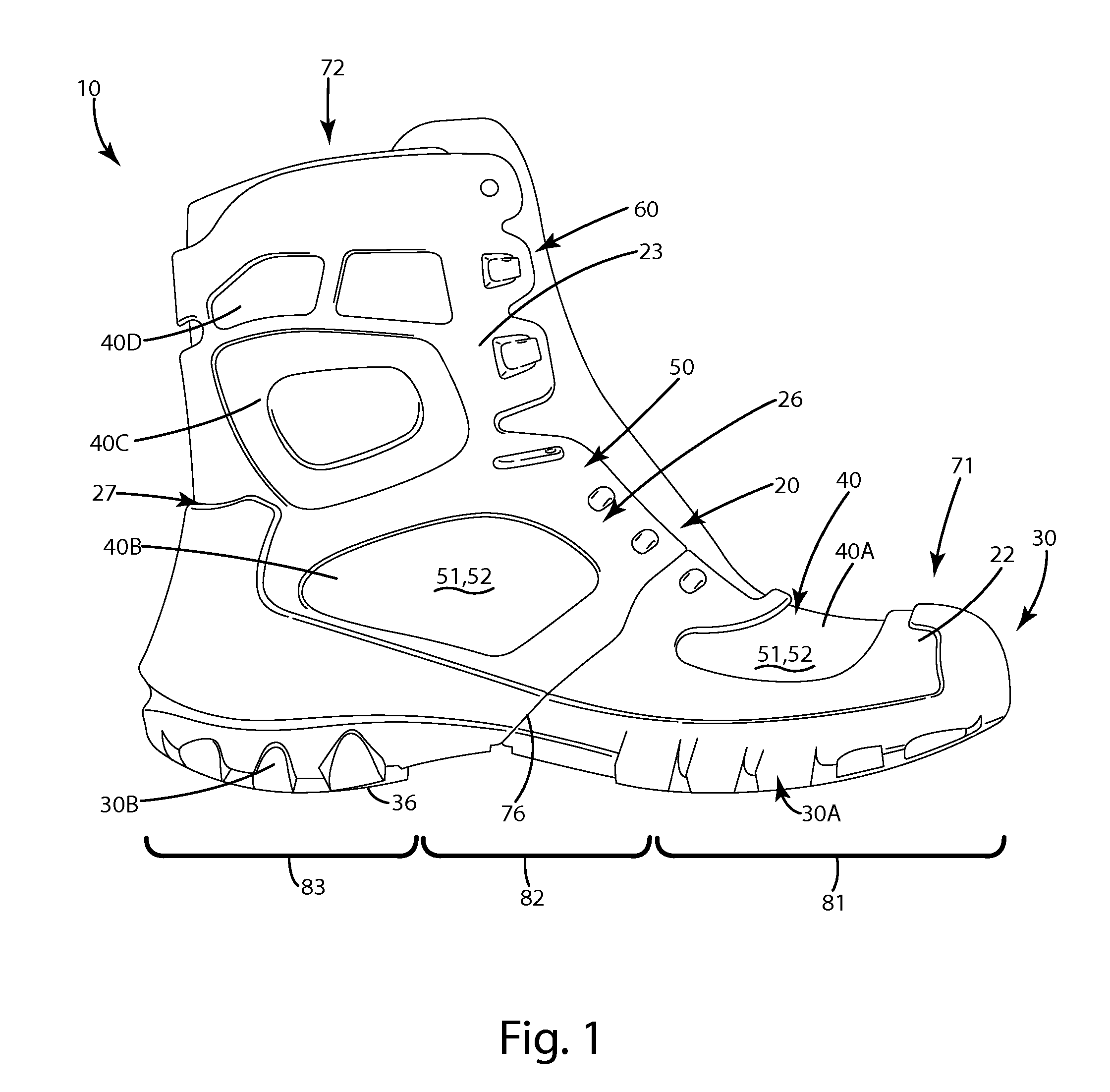Injection molded footwear and related method of manufacture
a technology of injection molding and footwear, applied in the field of footwear, can solve the problems of compounding the amount of labor required, imposing significant cost and labor burden on manufacturers, and all of the foregoing steps require substantial labor input, so as to reduce the amount of time and labor to construct footwear, and reduce the retooling cost and retooling time for different footwear models.
- Summary
- Abstract
- Description
- Claims
- Application Information
AI Technical Summary
Benefits of technology
Problems solved by technology
Method used
Image
Examples
first alternative embodiment
IV. First Alternative Embodiment
[0090]A first alternative embodiment of the footwear and related method of manufacture is illustrated in FIGS. 10-13 and generally designated 110. The footwear and method of this embodiment are similar to the above embodiments with several exceptions. For example, the upper 110 can be formed primarily by an exoskeleton and can be void of a base material in which it is embedded or bonded.
[0091]In this embodiment, the footwear 110 generally includes a modular combined forepart 171 and modular combined rearpart 172. The modular combined forepart 171 can include a forepart upper portion 120A and a forepart sole portion 130A. The modular rearpart 172 can include a rearpart upper portion 120B and a rearpart sole portion 130B constructed in accordance with any of the embodiments above. The upper portions 120A and 120B can include an exoskeleton 150. This exoskeleton 150 can include one or more holes 151 defined therein. The base material and related pieces d...
PUM
| Property | Measurement | Unit |
|---|---|---|
| area | aaaaa | aaaaa |
| area | aaaaa | aaaaa |
| area | aaaaa | aaaaa |
Abstract
Description
Claims
Application Information
 Login to View More
Login to View More - R&D
- Intellectual Property
- Life Sciences
- Materials
- Tech Scout
- Unparalleled Data Quality
- Higher Quality Content
- 60% Fewer Hallucinations
Browse by: Latest US Patents, China's latest patents, Technical Efficacy Thesaurus, Application Domain, Technology Topic, Popular Technical Reports.
© 2025 PatSnap. All rights reserved.Legal|Privacy policy|Modern Slavery Act Transparency Statement|Sitemap|About US| Contact US: help@patsnap.com



